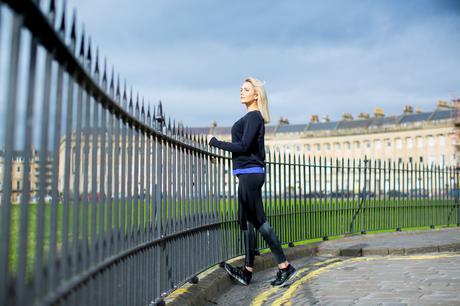
Stretching your lower body after a run isn’t just ‘nice-to-do’, it’s essential. You claim an array of benefits including the reduction of tightness in your largest muscle groups, alleviation of potential pains (including DOMS and the dreaded knee pain), the correction of muscular imbalances and even the improvement of actual running technique! Of course stretching after other forms of training (e.g. weight training) is also beneficial, so this post is by no means exclusive to running! The menu for available stretches is a broad buffet indeed, but in this post I wanted to showcase a specific few you might not have seen before, using a tennis ball or indeed a ‘physio ball’ like the one in my pictures. These therapeutic little spheres come in different shapes, sizes, and densities, and much like the foam-roller they enable a sort of self-massage. It’s a simple, cheap and hugely effective way to hone in on your specific needs, anywhere, anytime on the go, or at home. Dressed head-to-toe in Saucony, I went out for a 6k run around the basin city of Bath on a recent blog trip (full review coming soon!) and then dispatched this 5-stretch routine upon my return! Click MORE to get the full routine and give it a try yourself – all you need is a tennis ball!
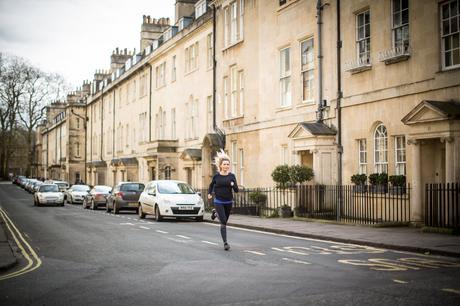
A number of my friends who’re serious marathon runners choose Saucony shoes for a number of reasons; the ones I’ve heard are their natural ride, their 4mm rise and supportive cushioning over long distances. I was working with them on their #LIFEONTHERUN campaign alongside my friend AJ Odudu; when I gave their newest, top-end Freedom ISO shoes a shot, I got it after one run. They’re extremely technical and are engineered for distance achievement, with reassuring support, as I suffered not a hint of foot fatigue over the run.
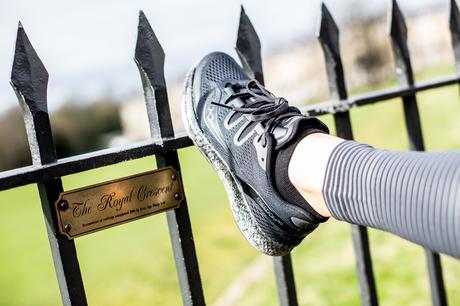
After the run, it’s straight back to the task at hand, warming down with the physio-ball! The beauty is that you’re able to control the pressure yourself. When thinking about ‘what’s the right amount of pressure’, it’s worth remembering it might feel uncomfortable but you shouldn’t experience any pain doing these exercises.
This time of year, many people sign up for their first proper run or are training more than usual, to exit the winter with escape velocity! As a personal trainer who’s constantly on one’s feet. I myself have had knee problems in the past, and clients over the years have noted that they often experience knee pain after a long walk or run. Whether or not you’re one of these people, or you’d rather just keep yourself in well-oiled condition, hopefully this will help you in your new training!
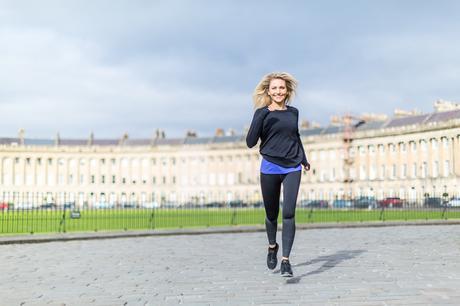
Stretches
STRETCH 1) Gluteus stretch using a tennis ball (as below image)
- Lying on your back bend your knees and place on foot across your thigh as in the photo illustrated.
- Place a tennis ball under the side of your gluteus with the leg bent resting on the other thigh.
- Move the tennis ball around until you find a sore spot and hold that position for 5-20 seconds. You should feel some discomfort but no pain.
- The tension will start to release after a while, then move the ball to another position.
- Play around with it for a couple of minutes and then do the same on the other side.
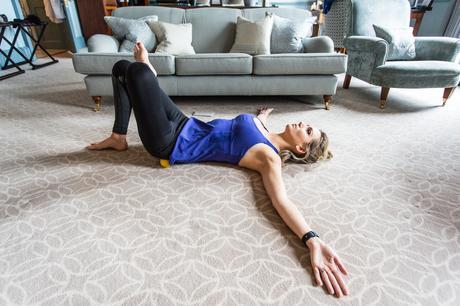
STRETCH 2) Calf stretch using a ball (as below image)
- Start but sitting upright on the floor, with your back straight.
- Place your legs out straight in front of you. Sit with your back against the wall (or like me, the banisters).
- Place the ball under the calf. Hold each sore spot you find for 5-20 seconds and then move the ball to another spot.
- Repeat on the other side.
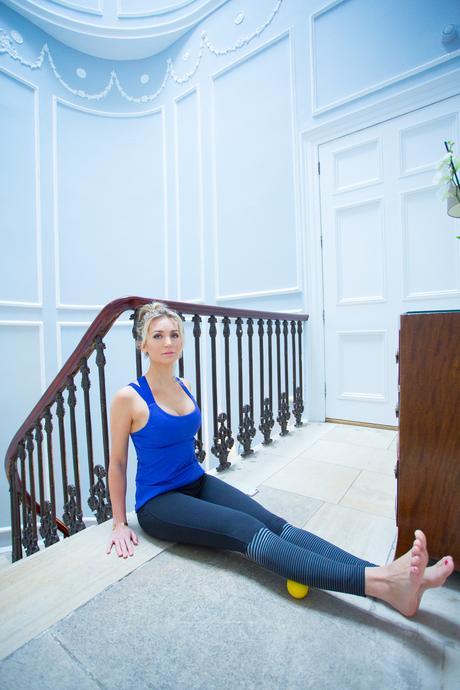
STRETCH 3) IT-band stretch using tennis ball (as below image)
- Start by sitting on the ground on a flat surface. Place the outside of your thigh on top of the ball.
- Hold the thigh gently in place over the ball, applying the a tolerable amount of pressure, for 5-20 seconds.
- When you feel the tension has decreased, move the ball to a lower part of the IT-band (that narrow band of muscle running on the outside of the thigh).
- Repeat until you feel the tension has decreased.
- Repeat on the other side.

STRETCH 4) Hip flexors stretch using tennis ball (as below image)
- Start by lying face down and placing the ball under the front of your hip (not the bone, but the muscular hip flexors below it).
- Move the ball around until you find a sore spot
- Hold the ball in the same position for 5 to 20 seconds, again applying tolerable pressure.
- Once the tension has decreased move the ball to another spot.
- Continue with this for a few minutes and then move to the other side.
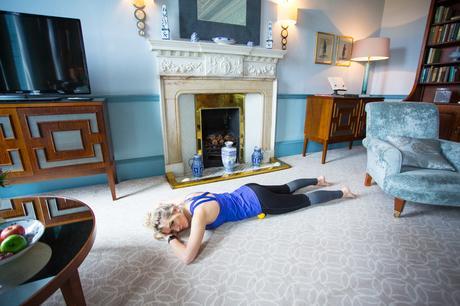
STRETCH 5) Hip Stretch using tennis ball (as below image)
- Lie on the ground on one side. Place your head on a foam box/stack of books or pillow, for adequate support of the neck.
- Place the ball on the side of your hip, then slowly lean into the ball.
- Find a sore spot and hold it for a few seconds 5-20, then move it to another spot.
- Then repeat on the other side.
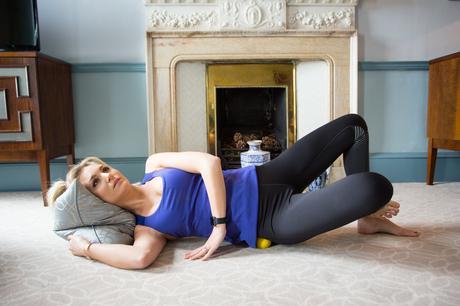
Conclusion
The instant gratification society in which we live, and our addicion to a ‘quick fix’ may make it seem as though these exercises are tedious and don’t give an obvious instant effect. They do work, but like most things that matter, they take time to yield results. If you’re training weekly, invest in a few minutes every day to care for your body. You may not experience pain now but this is something if left unchecked you will notice later in life.
Faya x
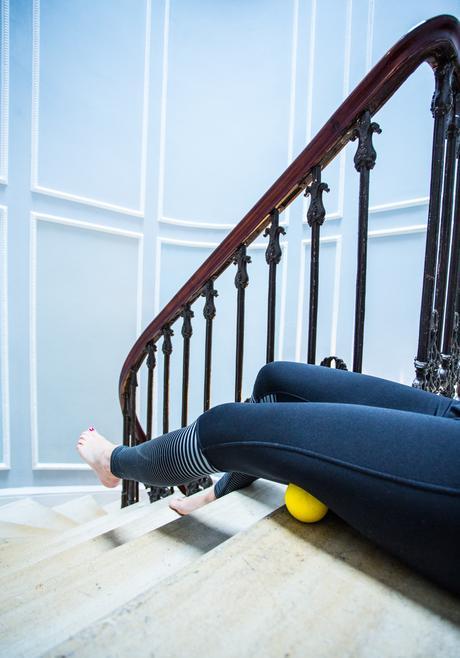
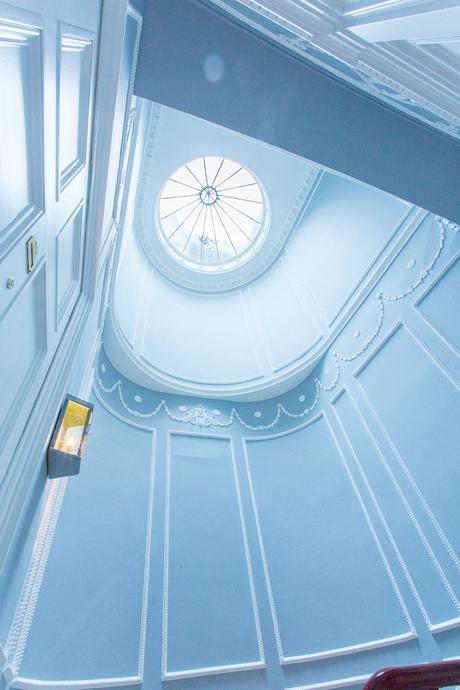

___________________________________
I WAS WEARING:
Trainers: Saucony, FREEDOM ISO Leggings: Saucony, Out of stock, similar HERE Short sleeve Top: Saucony, similar HERE Long sleeve top: Saucony, similar HERE ___________________________________
